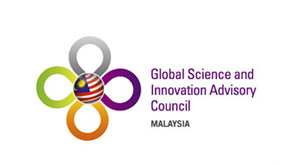
By Zakri Abdul Hamid –
Science Adviser to the Prime Minister of Malaysia
For Malaysia, the past three decades have been a period of rapid and sustained growth. Measuring growth with the traditional Gross Domestic Product yardstick, Malaysia’s economy has increased more than a hundredfold. Over the past four decades, we have averaged nearly 7% annual growth. Poverty rates have fallen from 49%, to less than 4%. Per-capita GDP has risen from US$370, to more than US$9,000.
This growth has been matched by a fundamental change in the structure of our economy. Like many Asian countries, we have moved from a basis of agriculture and raw commodities to a multi-sector economy, driven by services and manufacturing. The New Economic Model, introduced by Prime Minister Najib in 2010, focused on three key principles which include high income, inclusiveness and sustainability. These three principles, will drive our progress towards a fully developed nation; a competitive economy, strategically positioned in the region and global landscape, environmentally sustainable and offering a high quality of life.
Malaysia is also a country of 28 million people in South-east Asia comprising of a diversity of races, cultures and religions. We would like to think ourselves as moderates, a trait that is fast disappearing in today’s polarised society. In fact, Prime Minister Najib has put forward the concept of the Global Movement of the Moderates, in which he urged, that the moderates of this world take a lead in creating a peaceful and prosperous world in the 21st century.
However, prosperity is also dependent on economic well-being. It is the Prime Minister’s goal to dramatically improve economic development in Malaysia, ensuring that it becomes a fully-developed country by 2020. But he also recognizes that in today’s knowledge-based economy, the role of science is sacrosanct.
 When I became his Science Adviser two years ago, one of his early instructions was for me to set up an international mechanism, to advise him on the role of science, technology and innovation as an engine of economic development – sort of his “kitchen cabinet’. He however prefers “out of the box” advice that one normally does not get from the Academy of Sciences, which we have in many places.
When I became his Science Adviser two years ago, one of his early instructions was for me to set up an international mechanism, to advise him on the role of science, technology and innovation as an engine of economic development – sort of his “kitchen cabinet’. He however prefers “out of the box” advice that one normally does not get from the Academy of Sciences, which we have in many places.
Prime Minister Najib wanted an unconventional group of people, that would deliver pragmatic advice – the sort of eminent individuals who sit in the New York Academy of Sciences (NYAS) President’s Council. This is the background for establishing the “Global Science and Innovation Advisory Council (GSIAC)”, comprising of members from the Academy’s Council and cabinet members and senior corporate figures, from Malaysia. The council is chaired by the Prime Minister Najib himself.
The objectives of the Council include, providing advice on Malaysia’s aspirations of being a high income country through wealth creation and societal well-being, benchmarking Malaysia’s ranking and competitiveness in Science and Innovation against technologically advanced countries and improving Malaysia’s capabilities in Science, Technology and Innovation.
GSIAC is also aimed to generate and increase bilateral trade and investment value for short, medium, and long term timeline. The Council is deemed a crucial added value, to the efforts of the Malaysian Government, to make a quantum jump from middle-income country, to a high-income economy, by the year 2020.
Under the Malaysian Biomass initiative, one of the innovative project that has been identified, is to convert the waste to wealth. It involves maximising the yield and economic benefits of palm oil industry, including development of palm oil biomass, to improve both the national environment and economy, by moving towards production of high value green chemicals (HVGC). A Public-Private Partnership involving Malaysian companies, has been established to develop the industry, which could generate revenue, new jobs and reducing carbon emission to propel Malaysia towards a low carbon economy.
Among the other innovative projects that have been identified, is the creation of a model “Smart City” and “Smart Village,” in which an integrated system of information and other technologies will help maximise the efficiency of the community’s resource use and minimize waste. The Council has identified Iskandar Malaysia as the greenfield area for the Smart City initiative, since it is still in its developing stages and provide abundant opportunities for players to deploy the Smart City initiative.
Currently, Iskandar Malaysia is on track to becoming a strong and sustainable metropolis of international standing. Meanwhile, the Smart Village initiative is designed to empower and connect communities in rural areas through science and technology, including, socio-economic growth that matches the urban standard of living. The Council endorsed “Rimbunan Kaseh,” as the smart village model for Malaysia.
The teaching of Science, Technology, Science, Engineering and Mathematics (STEM), is also one of the focus for the Council. It is a critical area for any country to be competent in, if it aspires to be technologically-advanced. Prime Minister Najib invited the Academy to help with this, because he understands the importance of the STEM pipeline and how it impacts the community at large.
Prime Minister Najib recognizes the expertise of the Academy and had requested the Academy to oversee an evaluation of the Malaysian educational system, from kindergarten to graduate school, and the country’s public research assets. We are also working with the Academy, and the Academy partners like the State University of New York, to implement specific interventions to build our “Cradle to Career” programs. The Academy’s programs in Malaysia – in areas ranging from Nutrition Science collaboration to Cradle-to-Career interventions, like the Nobelist Mindset Project – are incorporated into a comprehensive approach, that will help the Malaysian research community build its own human capacity, through this pipeline model. To date, the Nobelist Mindset program has begun to garner attention from countries such as Australia and South Africa.
Besides New York, the Council also met in the San Francisco, California last year. During the meeting, a special session on “STI Strategies of Innovation Driven Companies” was discussed. It is quite obvious, that for any company to progress further, it needs to innovate and reinvent itself. These include the effort to inculcate the Silicon Valley culture of “Innovate or Perish”. The key to this must be to encourage the Government-Linked Companies (GLCs) and Small and Medium Enterprises (SMEs), to venture into the new potential growth areas, where returns on investments are multi-folds. This also will include the increase number of new technology-based companies or “start-ups”, especially among young scientists and entrepreneurs, from both genders.
Realizing that science is the essential fuels for the economy, Prime Minister Najib launched the Science to Action (S2A) Initiative on 1 November last year. The S2A is the latest initiative of Prime Minister Najib, to intensify the application of science and technology for industry development, people’s well-being and governance of science, technology and industry that aligns to the New Economic Model. The S2A initiative is made up of three key components: Science to Industry, Science to Well-Being and Science to Governance.
In a nutshell, the unique partnership with the formation of GSIAC, is also a form of social network, which is a key to scientific innovation. The partnership in GSIAC, is emblematic of the academic, industry, and government sectors to establish multilateral partnerships, to increase the impact of their strategic initiatives. The challenges and opportunities of the globalized world are so complex, that only multi-stakeholder efforts are seen as robust enough to achieve our common objectives.
You must be logged in to post a comment.